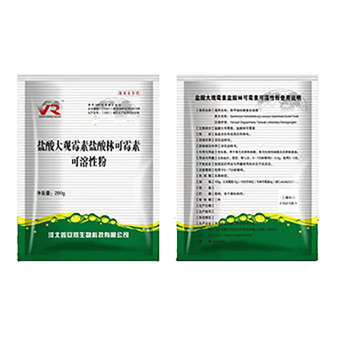- Afrikaans
- Albanian
- Amharic
- Arabic
- Armenian
- Azerbaijani
- Basque
- Belarusian
- Bengali
- Bosnian
- Bulgarian
- Catalan
- Cebuano
- Corsican
- Croatian
- Czech
- Danish
- Dutch
- English
- Esperanto
- Estonian
- Finnish
- French
- Frisian
- Galician
- Georgian
- German
- Greek
- Gujarati
- Haitian Creole
- hausa
- hawaiian
- Hebrew
- Hindi
- Miao
- Hungarian
- Icelandic
- igbo
- Indonesian
- irish
- Italian
- Japanese
- Javanese
- Kannada
- kazakh
- Khmer
- Rwandese
- Korean
- Kurdish
- Kyrgyz
- Lao
- Latin
- Latvian
- Lithuanian
- Luxembourgish
- Macedonian
- Malgashi
- Malay
- Malayalam
- Maltese
- Maori
- Marathi
- Mongolian
- Myanmar
- Nepali
- Norwegian
- Norwegian
- Occitan
- Pashto
- Persian
- Polish
- Portuguese
- Punjabi
- Romanian
- Russian
- Samoan
- Scottish Gaelic
- Serbian
- Sesotho
- Shona
- Sindhi
- Sinhala
- Slovak
- Slovenian
- Somali
- Spanish
- Sundanese
- Swahili
- Swedish
- Tagalog
- Tajik
- Tamil
- Tatar
- Telugu
- Thai
- Turkish
- Turkmen
- Ukrainian
- Urdu
- Uighur
- Uzbek
- Vietnamese
- Welsh
- Bantu
- Yiddish
- Yoruba
- Zulu
ພ.ຈ. . 11, 2024 17:25 Back to list
oxytetracycline injection use
The Use of Oxytetracycline Injection in Modern Medicine
Oxytetracycline, a broad-spectrum antibiotic belonging to the tetracycline class, has been employed in medical practice since its introduction in the 1940s. Its versatility and efficacy against a wide range of gram-positive and gram-negative bacteria have made it a significant tool in treating various infectious diseases. Although its use has diminished in some regions due to the emergence of resistant strains and the availability of more effective antibiotics, oxytetracycline injection continues to play a vital role in certain settings, particularly in veterinary medicine and specific human conditions.
Mechanism of Action
Oxytetracycline works by inhibiting protein synthesis in bacteria. It accomplishes this by binding to the 30S ribosomal subunit, thus preventing the attachment of the aminoacyl-tRNA to the mRNA-ribosome complex. This inhibition effectively stunts bacterial growth and reproduction, allowing the immune system to combat the infection. Due to its bacteriostatic nature, oxytetracycline is not only used to treat active infections but is also prescribed to prevent potential infections in high-risk patients.
Clinical Applications
In humans, oxytetracycline is frequently used to treat infections caused by susceptible organisms, including those responsible for respiratory tract infections, urinary tract infections, and certain skin conditions such as acne. It is also effective against less common infections like brucellosis and infections caused by rickettsia, mycoplasma, and chlamydia. The injectable form is particularly useful in cases where oral administration is not feasible due to vomiting or an inability to swallow.
In veterinary medicine, oxytetracycline is crucial for treating infections in livestock and pets. It is widely used in cattle to manage respiratory diseases, mastitis, and other bacterial infections. Additionally, its anti-inflammatory properties make it a go-to option for treating certain conditions in animals, demonstrating its adaptability across different species.
oxytetracycline injection use

Dosage and Administration
The dosage of oxytetracycline injection varies depending on the type and severity of the infection, as well as the patient's age and overall health. For adults, the typical dose may range from 250 mg to 500 mg given intravenously or intramuscularly every 6 to 12 hours. In veterinary applications, dosages can differ significantly based on the species and the condition being treated. Careful adherence to prescribed dosages is crucial to minimize side effects and reduce the risk of developing antibiotic resistance.
Side Effects and Considerations
While oxytetracycline is generally well-tolerated, it is not without side effects. Common adverse reactions may include gastrointestinal issues such as nausea, vomiting, diarrhea, and abdominal discomfort. In some cases, more severe reactions may occur, including hypersensitivity and anaphylaxis. Additionally, long-term use can lead to increased resistance among bacterial populations, a growing concern in antibiotic stewardship.
Patients should also be cautioned against sun exposure during treatment, as oxytetracycline can cause photosensitivity, increasing the risk of sunburn. It is contraindicated in certain populations, particularly pregnant women and young children, due to the risk of affecting bone growth and tooth development.
Conclusion
Despite the challenges posed by antibiotic resistance and the availability of newer medications, oxytetracycline injection remains a valuable antibiotic in both human and veterinary medicine. Its ability to treat various bacterial infections safely and effectively underscores its continuing relevance in contemporary therapeutics. As medical professionals navigate the complexities of antibiotic use, understanding and appropriately utilizing oxytetracycline's benefits will play a key role in ensuring effective patient care and promoting responsible antibiotic stewardship.
-
Guide to Oxytetracycline Injection
NewsMar.27,2025
-
Guide to Colistin Sulphate
NewsMar.27,2025
-
Gentamicin Sulfate: Uses, Price, And Key Information
NewsMar.27,2025
-
Enrofloxacin Injection: Uses, Price, And Supplier Information
NewsMar.27,2025
-
Dexamethasone Sodium Phosphate Injection: Uses, Price, And Key Information
NewsMar.27,2025
-
Albendazole Tablet: Uses, Dosage, Cost, And Key Information
NewsMar.27,2025













